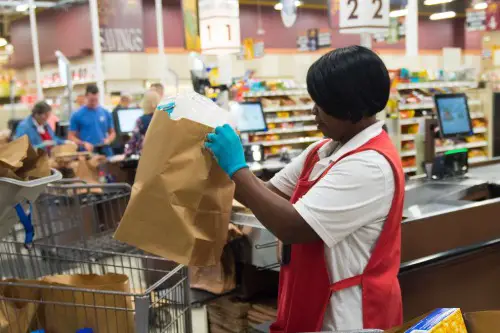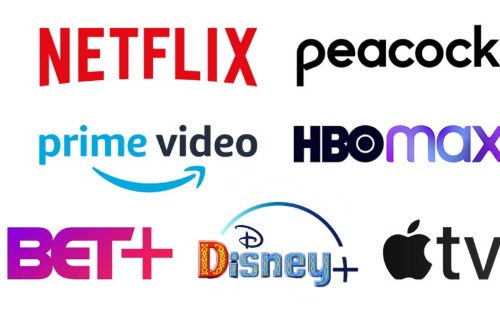1. Childcare

Childcare costs have always been high in the U.S., but now they’re reaching even more unaffordable levels, according to CBS News. The average cost of full-time daycare is over $10,000 per year per child, with prices soaring even higher in major cities. Several factors are driving this increase. First, childcare providers have been hit hard by rising labor costs. With the push for higher wages, many centers have had to increase pay to attract and retain qualified staff. Additionally, pandemic-related closures forced many childcare businesses to shut down permanently, reducing the number of available spots and increasing competition among parents. Fewer childcare options mean higher prices for the ones that remain open.
Parents are feeling the financial strain, with some spending more on daycare than they do on rent or mortgage payments. As a result, many are turning to alternatives like nanny shares, in-home daycare providers, or relying on family members for help. Others are making tough career choices, with some parents—especially mothers—deciding to leave the workforce because childcare costs outweigh their earnings. Unfortunately, government subsidies and assistance programs haven’t kept up with rising costs, leaving many families struggling to afford quality care. Unless major reforms happen, the affordability crisis in childcare is likely to persist.
2. Eggs

Egg prices have been on a rollercoaster over the past couple of years, and in 2025, they’re once again hitting wallets hard, according to The Times. A dozen large Grade A eggs now average around $4.15, a staggering increase compared to just a few years ago when they were closer to $1.50. The primary culprit? Avian influenza, also known as bird flu. The outbreak in 2022 wiped out over 58 million birds, and since then, recurring infections have continued to decimate egg-laying flocks. When millions of hens are culled to stop the spread of the virus, it takes months for supply levels to recover, leading to persistent shortages. On top of that, feed and transportation costs have risen, adding to the price hikes. Even when bird flu isn’t actively shutting down farms, the egg industry faces higher operating costs due to stricter biosecurity measures and inflation affecting labor and equipment.
Shoppers have definitely noticed the difference. Some have turned to bulk purchasing or wholesale clubs like Costco to cut costs, while others have started buying eggs from local farms where prices can be slightly lower. There’s even been a noticeable rise in backyard chicken ownership, as more people look for ways to produce their own eggs and avoid fluctuating grocery store prices. Unfortunately, the cost of raising chickens has also gone up, with feed and coop supplies getting more expensive. Until bird flu outbreaks subside and supply stabilizes, Americans should expect egg prices to remain high for the foreseeable future.
3. Pet Services

If you have a pet, you’ve probably noticed that everything from grooming to vet visits has gotten pricier. The cost of pet services has risen by 12.1% in 2024, and it’s not slowing down. Grooming appointments that used to cost $40 can now run upwards of $70, and overnight boarding rates have increased as well, according to The New York Times. Part of this is due to rising labor costs—pet care workers, like those in many other industries, are demanding higher wages. Inflation has also pushed up the cost of pet food, cleaning supplies, and medical equipment used in veterinary offices. Additionally, there’s been a surge in demand for pet services ever since the pandemic pet boom, as millions of people adopted dogs and cats during lockdowns.
For pet owners, this means budgeting more for their furry friends. Some are looking for ways to save, like learning to groom their pets at home, scheduling vet visits strategically, or signing up for pet insurance to offset medical expenses. Others are rethinking travel plans because boarding their pet for a week can now cost as much as a hotel stay for themselves. Even dog-walking and pet-sitting services have become pricier, making daily pet care a financial challenge for many families. With more people treating their pets like family members, it’s unlikely demand will decrease, meaning these prices may stay high for the foreseeable future.
4. Auto Insurance

Car insurance premiums have skyrocketed, leaving many drivers frustrated by rising costs they can’t control, according to Investopedia. In 2024, the average premium is up 12.7% from last year, with some drivers seeing hikes as high as 20-30%. There are a few reasons for this. First, cars have become more expensive to repair due to their increasingly complex technology. Features like backup cameras, lane departure warnings, and automatic braking make vehicles safer but also more costly to fix after an accident. A simple bumper replacement, which used to be a relatively cheap fix, now involves expensive sensors and recalibrations, driving up repair bills. Second, there has been an increase in reckless driving and accidents since the pandemic, leading to more insurance claims.
Another major factor is the rising cost of medical care. When an accident happens, medical expenses for injuries are a huge part of insurance payouts, and as healthcare prices climb, insurers pass those costs onto customers. Additionally, climate change-related disasters like hurricanes, wildfires, and floods have led to more vehicle damage claims, forcing insurers to raise rates to remain profitable. Many drivers are scrambling for ways to lower their premiums by increasing deductibles, bundling policies, or switching providers. Some are even opting for pay-per-mile insurance plans to avoid high fixed costs. However, with inflation affecting nearly every aspect of car ownership, insurance is just another expense that’s squeezing American budgets.
5. College Textbooks

If you’ve been to a college bookstore lately, you know that textbook prices are out of control. Some books cost over $200 each, and a single semester’s worth of materials can easily exceed $1,000. Over the past four decades, textbook prices have risen by more than 800%, outpacing inflation and tuition increases. One major reason is that textbook publishers frequently release new editions, often with only minor updates, making it harder for students to buy used copies. Additionally, many required textbooks now come with online access codes that prevent students from sharing books or reselling them after the semester ends.
Students are finding creative ways to save money, such as renting books, buying older editions, or using free online resources when available. Some professors are pushing back against publishers by using open educational resources (OER) or allowing students to use previous editions. While digital textbooks have helped reduce costs in some cases, publishers have found ways to keep prices high through subscription models. Until there’s significant reform in the textbook industry, students will continue to face hefty costs just to get the materials they need for their education.
6. Healthcare Premiums

Health insurance premiums continue to rise, making it even more difficult for Americans to afford necessary medical care, according to The Guardian. In 2024, the average employer-sponsored health plan costs over $8,400 per year for an individual and more than $23,000 for a family. One of the main reasons for this increase is the overall rise in healthcare costs, including higher prices for hospital visits, prescription drugs, and medical procedures. Insurance companies also face higher administrative expenses, and those costs get passed down to consumers in the form of higher premiums.
To cope with these rising expenses, many people are opting for high-deductible health plans, hoping to save on monthly premiums while risking higher out-of-pocket costs if they need medical care. Others are relying more on telemedicine, which can be a cheaper alternative for routine visits. Still, even with these strategies, healthcare remains one of the most burdensome costs for American families. With medical debt at an all-time high and little relief in sight, the increasing cost of staying healthy is a growing concern for millions of people.
7. Rent

Housing costs have been a major pain point for millions of Americans, and rent prices in particular have surged in the past few years. As of 2024, the national median rent for a one-bedroom apartment is around $1,500, with cities like New York, San Francisco, and Miami seeing average rents well above $3,000. In some areas, rent has increased by 20-30% in just a few years. The main reasons for this are a combination of high demand, limited housing supply, and rising property taxes and maintenance costs that landlords pass on to tenants. The pandemic-era eviction moratoriums and rental assistance programs have largely ended, meaning renters now face a harsher market with fewer protections.
Many Americans are struggling to keep up, with some being forced to move to cheaper areas or take on roommates to afford housing. The dream of homeownership, once a way to escape rising rents, is also out of reach for many due to high mortgage rates and home prices. Some cities have attempted to introduce rent control measures or increase affordable housing initiatives, but these solutions take time to have an impact. In the meantime, renters are feeling squeezed, with little relief in sight. Experts warn that unless housing supply increases significantly, rent prices will continue to climb, making it even harder for people to save or invest in their futures.
8. Groceries

Grocery bills have ballooned over the past few years, and while inflation has slowed slightly in 2024, prices remain much higher than pre-pandemic levels. Items like meat, dairy, and fresh produce have been particularly expensive. A gallon of milk that once cost around $2.50 is now closer to $4 in many places, and ground beef prices have jumped by nearly 25% since 2021. The main reasons for these increases include supply chain disruptions, extreme weather affecting crop yields, higher fuel costs for transportation, and increased wages for workers in food production and retail. Droughts and floods have impacted crops like wheat and corn, driving up the cost of everything from bread to animal feed.
Consumers have been forced to make changes, from buying in bulk and shopping at discount grocery stores to switching to store-brand products. Some have even turned to meal prepping or growing their own vegetables to cut costs. While government reports suggest inflation is cooling, many Americans still feel the pinch at checkout, as wages haven’t risen fast enough to keep up with grocery price hikes. Unless there are significant improvements in agricultural production and supply chain stability, food prices are likely to remain elevated.
9. Gasoline

Gas prices have been all over the place in recent years, with 2024 seeing another round of volatility. While prices aren’t quite as high as the $5 per gallon peaks of 2022, they’re still significantly higher than they were a few years ago. In some states, particularly California, gas remains well over $4.50 per gallon. There are a few key reasons for this: fluctuations in global oil markets, geopolitical tensions, refinery shutdowns, and seasonal demand spikes. The war in Ukraine has disrupted global oil supply chains, and OPEC+ decisions to cut production have also played a role in keeping prices elevated.
Americans have been feeling the impact at the pump, with some choosing to drive less, carpool, or switch to fuel-efficient vehicles. The push for electric cars has gained momentum, but EVs remain out of reach for many due to high upfront costs. Public transportation is an option in some cities, but in many parts of the country, people have no choice but to drive. Unless there’s a significant drop in oil prices or an increase in domestic production, gas prices are expected to remain unpredictable, making transportation a costly necessity for many.
10. Streaming Services

What used to be an affordable alternative to cable has now become just as expensive—if not more. Major streaming platforms like Netflix, Disney+, Hulu, and Max have all raised their prices in recent years, with Netflix’s premium plan now costing $22.99 per month. On top of that, many services have introduced ads while still charging for subscriptions, frustrating customers who originally switched to streaming to avoid commercial breaks. The increasing cost is largely due to the rising expense of producing original content, as well as companies looking to boost profits after years of aggressive expansion.
As a result, many people are cutting back on subscriptions or rotating between services instead of paying for all of them at once. Some are even returning to cable bundles, as the combined cost of multiple streaming platforms can now exceed traditional TV packages. Others are turning to free ad-supported services like Pluto TV or Tubi. However, with streaming companies continuing to raise prices and crack down on password sharing, the era of cheap, convenient entertainment is becoming a thing of the past.


